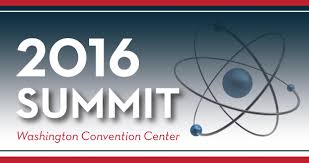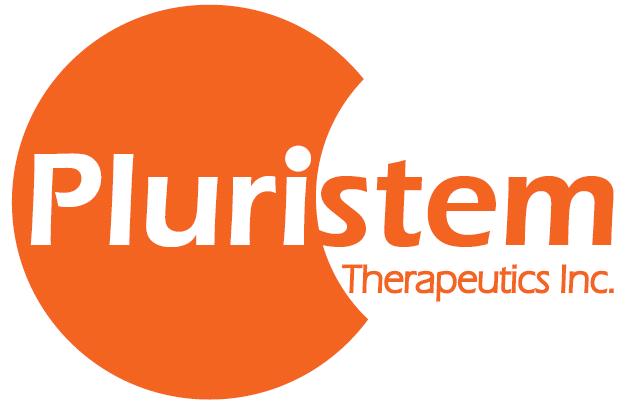
Blog
-
Geiger Readings for Apr 12, 2016
Ambient office = 92 nanosieverts per hourAmbient outside = 114 nanosieverts per hourSoil exposed to rain water = 108 nanosieverts per hourCelery from Central Market = 87 nanosieverts per hourTap water = 80 nanosieverts per hourFiltered water = 73 nanosieverts per hour -
2016 The Nuclear Security Summit Reports Progress In Combatting The Threat of Nuclear Terroism
I have been blogging a lot about nuclear security recently. The Nuclear Security Summit (NSS) is a series of conferences by representatives of many nations. Following a speech in 2009 highlighting the threat of nuclear terrorism, the U.S. President convened the first NSS in 2010 in Washington, DC to discuss political agreements. The second NSS was held in Seoul Korea in 2012 to consider what progress had been made on the proposed agreements. The third was at the Hague in the Netherlands in 2014 and was held to assess the success of the proposals and plan for the future. The most recent NSS was held in Washington, D.C., starting on March 30th.
The progress report for the 2016 NSS began with the statement that “participating States have reported a number of substantial actions and achievements that – individually and collectively – have strengthened nuclear security implementation at the national, regional, and international levels and built up the global nuclear security architecture.”
The report included a number of general progress notes with respect to nuclear security :
· 40 participating states engaged in capacity building through training and exercises.
· 30 participating states have updated laws, regulations or structures.
· 20 participating states have been involved in peer review missions, some working with the International Atomic Energy Agency’s International Physical Protection Advisory Service.
· 18 participating states have improved the security of radioactive sources.
· 17 participating states have removed or disposed of nuclear materials.
· 16 participating states have ratified or implemented nuclear security treaties.
· 15 participating states have implemented physical security upgrades or obtained new equipment.
· 12 participating states have joined or launched international or regional nuclear security groups to promote cooperation.
· 12 participating states have provided funding for nuclear security.
· 10 participating states have taken steps to support or implement the United National Security Council Resolution 1540.
· China, Jordan and India have subscribed to the 2014 Joint Statement on Strengthening Nuclear Security Implementation (INFCIRC 869)
Considering the dangers posed by nuclear weapons and materials, the 2016 NSS report on progress is encouraging.
Unfortunately, the elephant that was not in the room was Russia. Last October, Russia informed the U.S. that it would not be participating in the 2016 NSS. The Russian Foreign Minister stated that “We shared with our American colleagues our doubts regarding the added value of a forum that is planned to be held in the United States in 2016,” “We believe it is unacceptable to create a precedent of such outside interference into the work of international organizations,” and “Washington is trying to assume the role of the main and privileged ‘player’ in this field.” The foreign ministry also said that Russia would continue to focus on its cooperation with the International Atomic Energy Agency.
This is a serious blow to the intended purpose of the NSS and another sign of deteriorating relations between the U.S. and Russia. Russia is a major player in global nuclear affairs with its huge arsenal of nuclear weapons, fleet of nuclear reactors, many nuclear materials with questionable security, poor record on nuclear disposal, and ambitious plans for more weapons and reactors. It is critical that Russia be involve in any international effort to combat nuclear terrorism.
-
Geiger Readings for Apr 11, 2016
Ambient office = 99 nanosieverts per hourAmbient outside = 95 nanosieverts per hourSoil exposed to rain water = 101 nanosieverts per hourCrimini mushroom from Central Market = 88 nanosieverts per hourTap water = 87 nanosieverts per hourFiltered water = 80 nanosieverts per hour -
Geiger Readings for Apr 10, 2016
Ambient office = 74 nanosieverts per hourAmbient outside = 81 nanosieverts per hourSoil exposed to rain water = 81 nanosieverts per hourVine ripened tomato from Central Market = 98 nanosieverts per hourTap water = 104 nanosieverts per hourFiltered water = 79 nanosieverts per hour -
Geiger Readings for Apr 09, 2016
Ambient office = 136 nanosieverts per hourAmbient outside = 94 nanosieverts per hourSoil exposed to rain water = 112 nanosieverts per hourRedleaf lettuce from Central Market = 72 nanosieverts per hourTap water = 139 nanosieverts per hourFiltered water = 122 nanosieverts per hour -
Israeli Firm Develops Power New Treatment for Radiation Exposure Based on Placental Cells
I have written a lot of blog posts about the possibility of future nuclear accidents and deliberate nuclear attacks. One the big reasons for my obsession with nuclear security is that fact that it is very difficult to deal with the biological damage of ionizing radiation. Treatment options for victims exposed to radiation have just improved with the arrival of a new therapy by Israeli researchers. Pluristem Therapeutics in Haifa, Israel has just announced that they have developed a new treatment for victims of extreme radiation exposure. The treatments consists of an injection of placental cells. They claim that they can cure patients with multiple organ failure caused by very high levels of radiation exposure. They were licensed to develop a commercial radiation treatment in 2007.
First, placentas are donated by women who have had C-sections to deliver babies. The cells in the placentas are collected and then processed to create a mixture of therapeutic proteins. These proteins can repair radiation-induced damage to lungs, skin, bone marrow and the gastrointestinal tract. The mixture is injected into muscle tissue which helps its absorption by bone marrow. The treatment can reverse damage caused by radiation that would normally kill seventy percent of exposure victims. The company has been researching the therapeutic effects of placental cells for a decade and found that they are especially effective in repairing radiation damage.
The therapy has been tested in clinical trials in Israel at the Hadassah University Medical Center in Jerusalem. It has also been tested in the United States by the National Institute of Health. Recovery rates of animals exposed to radiation has been almost one hundred percent. Best results have been achieved if the placental cells are injected within forty eight hours of exposure to lethal radiation. When the treatment enters the market, it will be cheap, easy to use and widely available. Unlike the only other bone marrow transplant available, the new Israeli therapy does not require expensive and time consuming DNA matching.
Israel is very concerned about a possible nuclear threat from Pakistan which currently has nuclear weapons. They are also worried about Iran developing nuclear weapons. Terrorist organizations such as ISIS in the region which are hostile to Israel have been trying to obtain nuclear materials to create dirty bombs for years. The new therapy could save many Israeli citizens in case of a nuclear attack.
Pluristem has formed a partnership with the Fukushima Medical University in Japan to test its therapy for radiation treatment. The Japanese want to have the therapy available to treat possible radiation exposure in workers cleaning up the Fukushima nuclear power plant. The company has been asked to join the U.S. National Institute of Allergy and Infectious Disease program. The U.S. authorities want to have large quantities of the placental cell treatment on hand to cope with serious nuclear accidents or terrorist attacks in the U.S.
With the global proliferation of nuclear weapons, the theft and smuggling of nuclear materials, the increasing threat of nuclear terrorist attacks and the rising tension between states with nuclear weapons, the development of a cheap, powerful broad spectrum treatment for serious injury caused by radiation damage is certainly welcome!
Pluristem Therapeutics logo:





